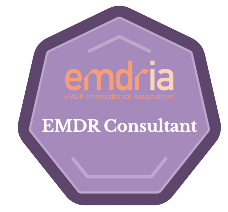EMDR Therapy Is on the Rise – Is It Right for You?
Eye Movement Desensitization and Reprocessing, or EMDR, is gaining recognition across the mental health field for its effectiveness in helping people heal from emotional pain. While it was originally developed as a treatment for post traumatic stress disorder, EMDR is now widely used to support clients struggling with anxiety, depression, grief, and even chronic pain. If you are curious whether EMDR might be the right fit for you, this guide will help you understand what it is, how it works, and how to know if it could support your healing journey.
What Is EMDR and Why Is It So Popular?
EMDR is a structured therapy that helps the brain reprocess distressing memories and experiences. During a session, you briefly focus on a troubling thought or memory while engaging in bilateral stimulation, such as eye movements or tapping. This stimulation taps into a number of neurological processes that help the brain integrate the distressing memory into more adaptive information, improving the beliefs, behaviors, emotional state and overall functioning of the client.
One reason EMDR is gaining attention is its efficiency. According to the U.S. Department of Veterans Affairs, EMDR can often be completed in fewer sessions than other trauma‑focused treatments. It is also recognized as a recommended treatment for trauma by the American Psychological Association.
Beyond PTSD: EMDR for Anxiety, Depression, and Chronic Pain
Although EMDR is most often associated with trauma, its benefits extend well beyond PTSD. It is frequently used to help clients with anxiety, low self-worth, complicated grief, and emotional blocks that developed from past experiences they may not have considered traumatic.
A 2021 meta-analysis published in Frontiers in Psychiatry found that EMDR significantly reduced symptoms of depression, even outperforming cognitive behavioral therapy in some cases. Another hospital-based study showed that 55 percent of participants reached full remission after EMDR treatment for depression, with 74 percent remaining relapse-free after a year.
There is also increasing evidence supporting EMDR’s role in pain management. A clinical study from FLENI Institute demonstrated significant reductions in pain intensity, depression, and anxiety in chronic pain patients following 12 EMDR sessions. A randomized pilot study also found EMDR to be more effective than standard treatment for people living with chronic, non-malignant pain.
What to Expect in an EMDR Session
EMDR therapy follows an eight-phase protocol designed to help individuals safely process distressing memories and the negative beliefs attached to them. In the early sessions, the therapist takes a detailed history, helps the client identify target memories, and builds coping strategies to ensure emotional safety. Once the client is ready, reprocessing begins using bilateral stimulation, such as guided eye movements, tapping, or tones, while the client recalls aspects of the memory. The client remains fully awake and in control throughout the session and does not need to describe the memory in detail for EMDR to be effective. The goal is to reduce the emotional intensity of the memory and reinforce positive beliefs. Each session ends with a return to a calm state, and the therapist evaluates the progress and plans for future sessions. Sessions typically last between 60 and 90 minutes. Some clients experience relief after just a few sessions, while others benefit from deeper work over time, depending on the complexity of their history.
Is EMDR Right for You?
EMDR may be a helpful option if you:
- Feel stuck in negative thoughts or emotional cycles
- Experience anxiety or panic tied to past experiences
- Struggle with unresolved grief, guilt, shame, or anger
- Avoid specific situations, people, or memories
- Sense that old experiences are still affecting your life today
Even experiences that seem small on the surface—what some refer to as “small t” traumas—can have a lasting impact. EMDR can help loosen the emotional grip of these events so you can respond more calmly and confidently in the present.
Clearing Up Common Misunderstandings
Some people mistakenly believe that EMDR is a form of hypnosis. It is not. You remain fully in control throughout each session. Others assume EMDR is only useful for vivid, well-remembered trauma. In reality, it can be highly effective for vague or fragmented memories as long as they carry emotional weight.
Finally, EMDR is often thought of as a fringe or untested method. In truth, it has been validated by over 30 years of clinical research and more than 30 randomized controlled trials. It is used in VA hospitals, trauma centers, and private practices around the world.
Moving Forward
At Greenwood Counseling Center, EMDR is one of our specialties. Clients often describe feeling lighter, clearer, and more resilient after their sessions. If you are looking for a therapy that can help you let go of painful experiences and move forward, EMDR may be a powerful tool to consider.
If you are ready to explore EMDR, we are here to help!





